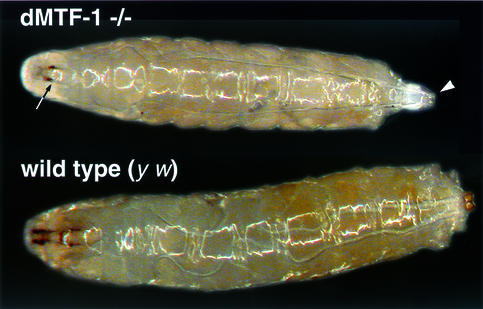Fig. 7. Treatment with the copper chelator TTM results in extreme prolongation of the larval period. Shown are an MTF-1 mutant larva (allele MTF-1140-1) at 22 days kept in 10 µM TTM and a wild-type (y w) control larva at the wandering stage. Note that in the mutant larva, although its size approaches that of a wandering third instar larva, several anatomical deviations, including tracheal system (arrowhead points to posterior spiracles) and mouth hooks (arrow) correspond to those of second instar larvae. Anterior spiracles, not visible here, also resemble second instar larvae. Note that the diameter of the tracheal tubes is smaller in the MTF-1 knockout than in y w controls. Such larvae cannot enter pupation and die between 20 and 32 days.

An official website of the United States government
Here's how you know
Official websites use .gov
A
.gov website belongs to an official
government organization in the United States.
Secure .gov websites use HTTPS
A lock (
) or https:// means you've safely
connected to the .gov website. Share sensitive
information only on official, secure websites.
